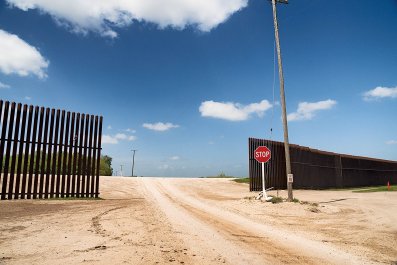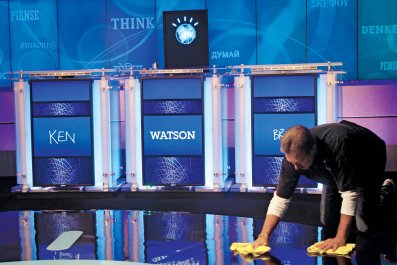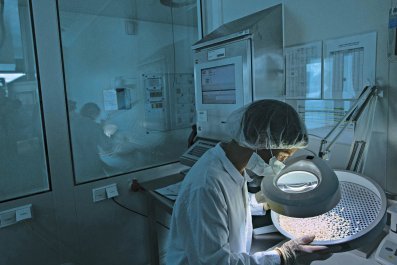No one is sure the exact date the American-made mechanical watch died, but it was sometime around 1970. Not since then has the U.S. produced an automatic, or self-winding, watch, despite being the world's top producer of high-quality timepieces for nearly a century.
But now that's changing. There's genuine excitement about an American-designed and produced watch, and no, it doesn't come from Apple. New brands like Shinola and Weiss Watches are slowly bringing American watch production back to the U.S., piece by piece.
This revival of watchmaking is part of the larger "reshoring" effort to bring manufacturing stateside, and what makes this group of new brands interesting is the complexity of bringing production back. It must be done in steps, with the final and most-anticipated one being the production of the movement—the mechanical inside of the watch, made of dozens and sometimes hundreds, of moving parts.
For watch enthusiasts, the fruits of this movement will signify the return of American watchmaking. For economists, industry experts and others interested in domestic manufacturing, it would prove that complex manufacturing can be done on scale in the U.S., and that consumers will support it.
The story of the long-lost American watch business is really the story of American manufacturing, with jobs and production gone overseas to save costs. But thanks to a renewed interest in American-made goods, a few smaller startup brands are fighting to bring U.S. production back.
"From the mid-1800s through World War II, the American watch industry was the best in the world," says Jordan Ficklin, executive director of the American Watchmakers-Clockmakers Institute. "We invented the assembly line process for watches here in the United States. And the Swiss started adopting that, and by the end of the war they had perfected it."
American-made watches were ubiquitous. Companies like the Waltham Watch Company in Massachusetts and Hamilton Watch in Pennsylvania employed thousands. Waltham Watch, founded in the middle of the 19th century, was a powerhouse of watchmaking until the 1950s, when it closed its doors. Hamilton, another American powerhouse watch manufacturer, was founded in 1892 in Lancaster, Pennsylvania, and supplied a million watches to the U.S. military during World War II.
"They're trying to build brands associated with the United States," says Ficklin of the new watch startups. "Once those brands are established, they'll be able to branch out and bring more and more of the production here to the U.S."
In the past two years alone, four American watch brands with varying degrees of U.S.-based manufacturing and production—Shinola, Weiss, Martenero and Throne—have launched. And more are coming. Devon, Niall and RGM Watch Co. are all making watches in the U.S. as well. "The idea is always, where feasible, to manufacture as much of the componentry as possible here in the United States," says Steve Bock, CEO of Shinola. "It's a hugely important part of what we're doing."
Thanks to a new generation of men willing to pay a premium price for products and a renewed interest in vintage and mechanical watches, the American-made watch is making a comeback.
No other company is leading the American-watch manufacturing revival on a bigger scale than Shinola, the Detroit-based brand that launched in 2013. "What we knew was that we could build a factory here; what we didn't know was, Could we find the talent necessary to build a watch in Detroit?" says Bock. "What we found in Detroit is, as you would expect, people are very dedicated. There's a great amount of quality workmanship, of creativity, of willingness to work. We found that we can absolutely build a watch of great quality and of very substantial value compared to our competition."
Sources say Shinola manufactured some 50,000 watches in its first year and is on course to triple that this year. Shinola employs 309 people, with 84 people in watch manufacturing and 50 in leather manufacturing. It also makes bicycles and some sporting goods in their Detroit factory though, "The vast majority of our business comes from watches," says Bock.
Then there's Los Angeles–based Weiss Watch Company. Started by 27-year-old Cameron Weiss just over a year ago, it now has watches in Barney's New York and some 15 other retail locations, with ambitious expansion plans for next year. Weiss assembles each watch himself, but he's expecting to hire another watchmaker and move into a larger facility in Los Angeles next month.
In addition to the typical challenges that come with any new business, watch startups face a whole different set of obstacles, mostly in reviving an industry that had disappeared. "All of these things have not been done in the U.S. for around a hundred years. So there's no infrastructure for it," says Weiss. "We have to start from the ground up. We really have to reinvent the industry."
Weiss uses Swiss movements, but the cases, dials, straps, packaging and components are made in Los Angeles. "Each field watch has 150 components that go into it," says Weiss. "And for each one we actually have to train the staff to properly cut the material from a block of metal and then properly handle the material too."
The newest American startup is New York–based Martenero. Like Shinola, it sources cases and movements from overseas, but assembly is done domestically. Martenero is the new kid in the watch community, with just two the full-time employees—co-founders John Tarantino, CEO, and Matt O'Dowd, creative director. But both O'Dowd and Tarantino say they see a solid opportunity in American-made watches. Tarantino wants to see a return to the "manufacturing glory" of American production
"We thought we'd like to bring as much of that as possible back to New York," he says. "We can start with assembly. It's a simpler project. You're building the watch as opposed to manufacturing the different components. I view that as our first baby step toward making a truly American-made watch."
The ultimate goal for many watchmakers and watch collectors, though, is to be completely American-made. Spend a little time on watch blogs and you'll see how any watch made, assembled or manufactured in the U.S. is quickly dissected and then criticized for falsely representing its American bona fides. "The holy grail is a truly 100 percent American-made watch," says Tarantino.
Right now, Weiss seems to be the closest to that goal. "That's what we're working on. We're just starting prototyping and making sure everything is perfect," says Weiss. "It's definitely something that will happen."
"It's been kind of a challenge for me personally," he adds. "It was once an industry that was thriving that employed thousands of people. And we were really the best mass producer of mechanical timepieces in the world. So to try and restore that, even a small portion of, I think would be something really great."
Asked about his plans for domestic movement production, Shinola's CEO is a little more coy. "What I've learned in this company is never say never to anything," says Bock. "We're a long way down that road of really not only creating and designing wonderful watches but producing them in quantity. And once we've got this done, I think the future is just fantastic. We're very optimistic."



























